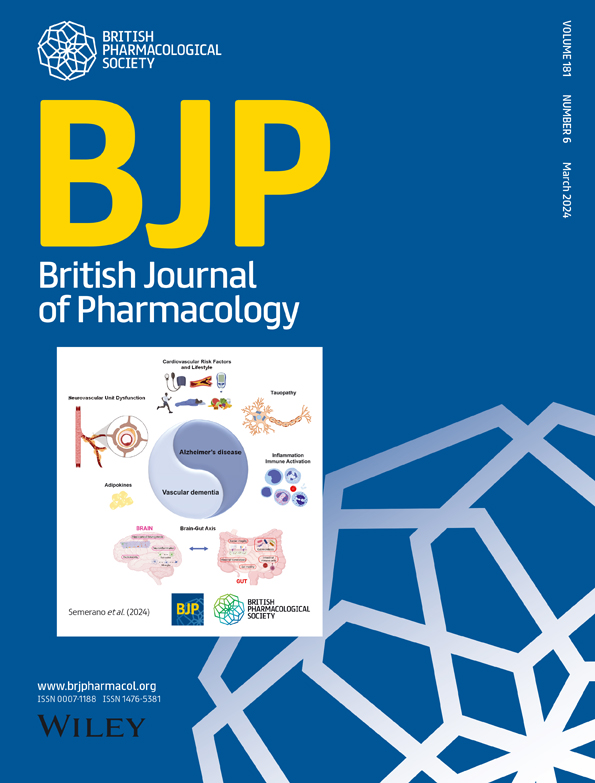Blockade of cannabinoid CB1 receptors potentiates the anti-fibrotic effects mediated by SGLT2 inhibition in a mouse model of diabetic nephropathy
Abstract
Background and purpose
Diabetic nephropathy (DN) is a common complication of diabetes. Current treatments include renin-angiotensin-aldosterone system (RAAS) blockers and sodium-glucose co-transporter 2 (SGLT2) inhibitors. The cannabinoid CB1 receptor is a potential therapeutic target. We explored combining CB1 receptor inverse agonism and SGLT2 inhibition for treating DN, to offer better reno-protection.
Experimental approach
C57BLKS-Leprdb/db and control mice were fed a high-protein diet for 9 weeks. After 5 weeks, db/db mice were either exposed to placebo, empagliflozin (SGLT2 inhibitor), monlunabant (CB1 receptor inverse agonist) or a combination of both compounds (same dose) by daily oral gavage for 28 days. Diagnostic parameters for DN were analysed, along with markers of oxidative stress, inflammation and renal fibrosis.
Key results
Both single treatments improved albuminuria and albumin-to-creatinine ratios, but the combination was more effective. Similar results were seen for inflammatory oxidative stress markers. The combination showed additive protective effects on glomerular morphology, podocyte loss and proximal tubular cell injury. Dual treatment significantly reduced tubulointerstitial fibrosis compared to monotherapy and vehicle-treated mice. Transcriptomic analysis identified the STAT3 signalling pathway as a key mediator, with decreased STAT3 phosphorylation observed with both treatments. Key mediators involved included angiopoietin 1 and fibroblast growth factor 20, which modulated the STAT3 pathway via CB1 receptors and SGLT2, respectively.
Conclusions and implications
Taken together, these data strongly suggest that a poly-pharmacological approach combining both SGLT2 inhibitors and CB1 receptor inverse agonism represents a promising therapeutic strategy for managing DN, with better reno-protection than mono-therapies.


 求助内容:
求助内容: 应助结果提醒方式:
应助结果提醒方式:


